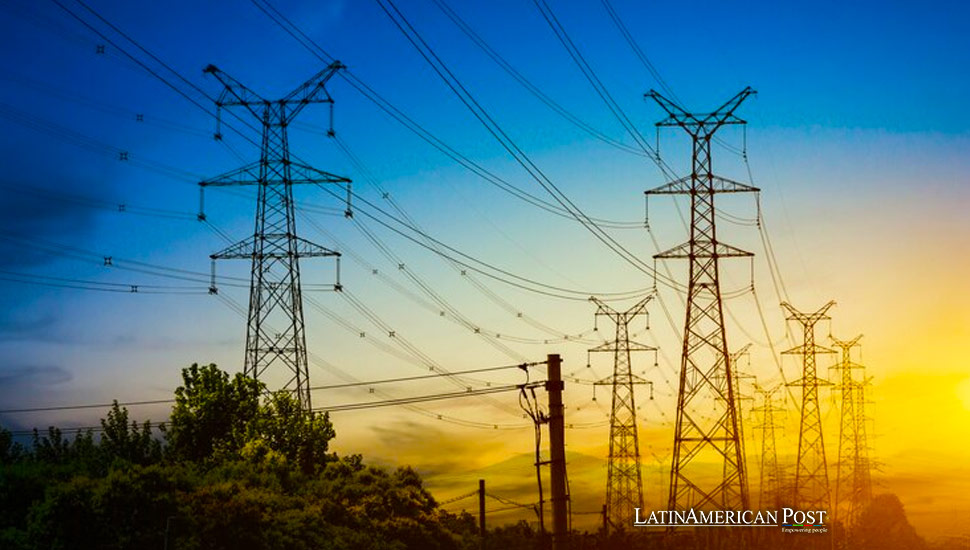Electricity Consumption Surge in Mexico Demands Urgent Energy Sector Investment

Moody’s Ratings, a trusted authority in financial analysis, has recently released a report that sheds light on Mexico’s electricity consumption surge. Their findings, which reveal an annual increase of nearly 4%, underscore the pressing need for substantial investment in the country’s energy sector.
Electricity consumption in Mexico is expanding more rapidly than the government had anticipated, necessitating more significant investment in the sector, according to the credit rating agency Moody’s. Their report indicates that the country’s annual demand for electricity rose by 3.9% in 2022 and 3.8% in 2023, surpassing the Energy Ministry’s (Sener) projections of a 2.5% yearly increase.
The document mentions that the high electricity demand boosted the state-owned Federal Electricity Commission (CFE) sales by 4% in 2023 alone. It further notes that the country’s existing energy projects “are well-positioned to be more strategic at their respective operational points, especially those supplying high-demand industrial centers.”
Moody’s report also brings positive news for current energy projects. The imbalance between supply and demand will raise the price of generation capacity, signaling the need to increase installed capacity. This presents a significant opportunity for companies renewing their power purchase agreements with the state-owned CFE, as they can enhance their renegotiation margins under favorable conditions. This optimistic outlook should encourage potential investors and industry professionals.
The rating agency underscores the necessity of expanding investments in capacity and transmission, emphasizing that it will be crucial to maintain stability in the electric system and ensure availability for residential and industrial customers. It recalls that a series of blackouts in May 2024 highlighted Mexico’s limited energy reserves and the challenges that could arise from relocating companies to the country, known as ‘nearshoring,’ which would drive up industrial electricity consumption.
“An increase in nearshoring operations could also cause consumption to exceed baseline projections in the coming years, so generation and transmission capacity are factors that companies considering relocating operations to Mexico will need to consider,” the report notes.
Moody adds that reliance on natural gas imported from the United States and the low penetration of renewable energy in the Mexican market pose risks for more companies deciding to relocate their manufacturing to Mexico due to nearshoring.
The note also emphasizes the need for greater clarity in the energy transition. It suggests that the next Mexican government, following the June 2 elections, “will have the opportunity to establish a clear energy transition plan with transparent policies and sufficient generation and transmission capacity.”
Historical Context and the Need for Energy Reforms in Mexico
The rapid increase in electricity demand in Mexico can be traced back to broader historical and economic trends within Latin America. Historically, Latin America has faced significant challenges in developing robust and reliable energy infrastructure. In Mexico, the energy sector has undergone various phases of reform and nationalization, reflecting broader regional trends of state intervention and privatization.
In the early 20th century, Mexico’s energy sector was characterized by foreign investment and control, primarily by American and British companies. However, the nationalization of the oil industry in 1938 under President Lázaro Cárdenas marked a significant shift towards state control, a trend that extended into the electricity sector.
The Federal Electricity Commission (CFE) formation in 1937 was pivotal in Mexico’s energy history. The CFE provided electricity to the entire country, a mission that reflected the broader goals of national development and modernization. Throughout the mid-20th century, the CFE played a crucial role in electrifying rural areas and supporting industrial growth.
However, the global oil crisis of the 1970s and the subsequent economic challenges of the 1980s highlighted the vulnerabilities of Mexico’s state-controlled energy model. These challenges prompted a wave of neoliberal reforms in the 1990s to liberalize the energy sector and attract private investment. The 2013 energy reform under President Enrique Peña Nieto was one of the most significant, opening the oil and electricity markets to private and foreign investment.
Despite the significant reforms, Mexico’s energy sector is not without its challenges. Moody’s report underlines the country’s reliance on imported natural gas from the United States, a situation that could pose risks in the future. The low penetration of renewable energy sources is another critical issue, particularly given Mexico’s vast solar and wind energy potential. These factors highlight the need for greater energy independence and diversification, a concern that should be shared by all stakeholders.
The recent surges in electricity consumption, driven by economic growth and industrial demand, highlight the urgent need for continued investment and reform. The May 2024 blackouts serve as a stark reminder of the vulnerabilities in Mexico’s energy infrastructure and the pressing need for modernization and capacity expansion.
The Impact of Nearshoring and Industrial Growth
The phenomenon of nearshoring, where companies relocate production closer to their markets, has gained significant momentum in recent years. For Mexico, nearshoring presents both opportunities and challenges. The country’s proximity to the United States, its large manufacturing base, and its network of free trade agreements make it an attractive destination for companies looking to reduce supply chain risks and costs.
The growing trend of nearshoring, where companies relocate their production closer to their markets, has significantly impacted Mexico’s electricity demand. This shift in industrial activity has led to a surge in demand that is outpacing the country’s current supply capabilities, necessitating immediate investment in both generation and transmission infrastructure.
The reliance on imported natural gas and the limited development of renewable energy sources present significant risks. Mexico’s energy policy must address these challenges by promoting energy diversification and sustainability. Investments in renewable energy projects, such as solar and wind farms, are crucial for reducing dependency on imported fuels and enhancing energy security.
The Role of Government Policy and Future Prospects
With the June 2 elections on the horizon, the incoming government will play a pivotal role in shaping Mexico’s energy future. It is crucial that they establish a clear and transparent energy transition plan, which should prioritize the expansion of renewable energy, the modernization of the electricity grid, and the development of domestic energy resources.
Government policy must also address the energy sector’s regulatory and financial challenges. Providing incentives for private investment, streamlining regulatory processes, and ensuring a stable and predictable policy environment are crucial for fostering growth and innovation in the energy sector.
Moreover, addressing the social and environmental impacts of energy development is essential. Community engagement, environmental protection, and equitable access to energy must be integral components of the energy transition plan. Ensuring that all segments of society benefit from energy development, particularly marginalized and rural communities, is critical for promoting inclusive and sustainable growth.
The sharp increases in electricity consumption in Mexico underscore the urgent need for substantial investment in the energy sector. The challenges of meeting rising demand and the opportunities presented by nearshoring and industrial growth require a comprehensive and forward-looking approach to energy policy.
Also read: Mexico Requires $400 Billion Investment by 2032 to Maximize Nearshoring Opportunities
Historical context reveals that Mexico’s energy sector has undergone significant transformations, reflecting broader trends in Latin American development. The current challenges and opportunities must be addressed through strategic investments, regulatory reforms, and a clear commitment to sustainable energy development.
The upcoming government has a unique opportunity to shape Mexico’s energy future, ensuring that the country can meet its growing electricity needs while promoting economic growth, energy security, and environmental sustainability. By addressing these challenges head-on, Mexico can position itself as a leader in the global energy transition and secure a prosperous future for its citizens.




